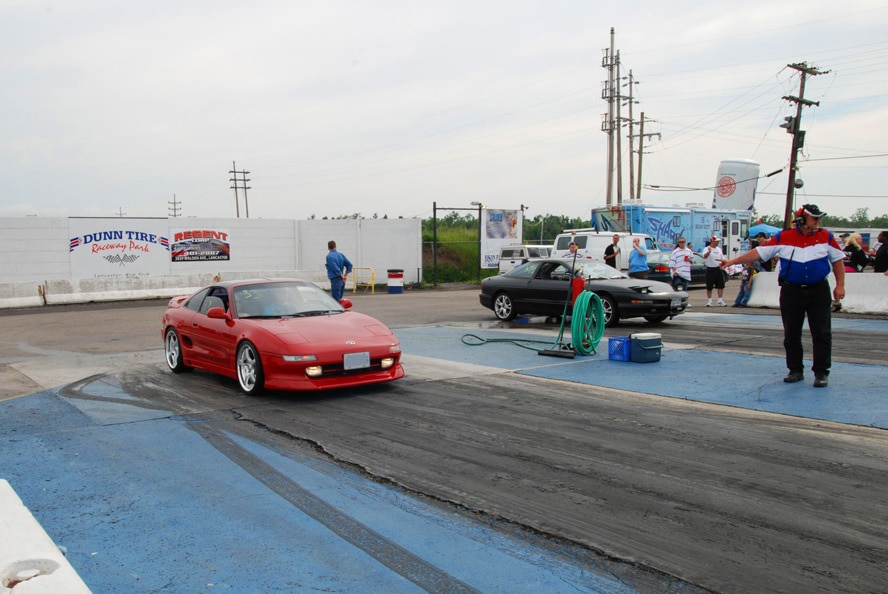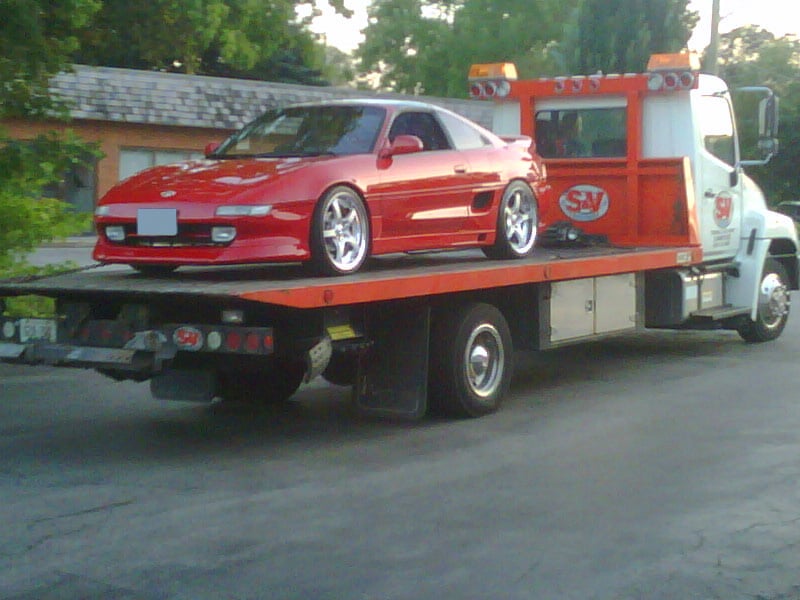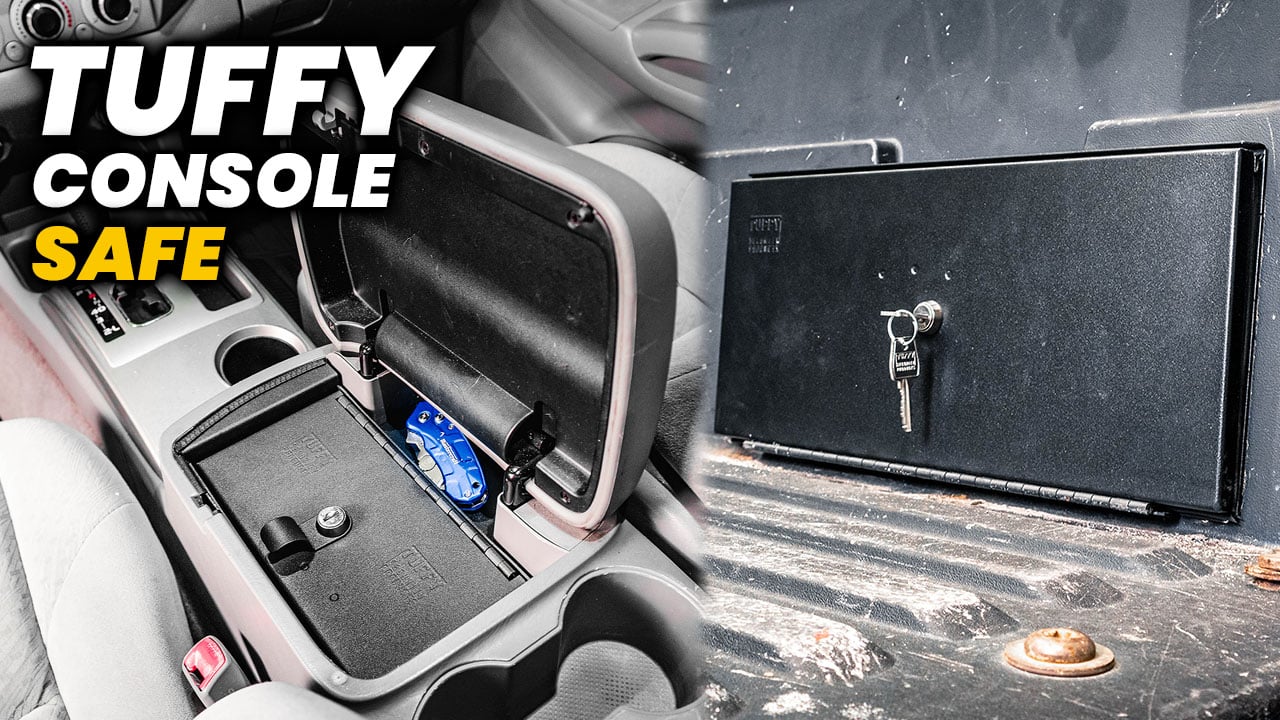Drag racing is something I think every car guy should try at least once in their life. We all know by now that “drag racing is for fast cars, road racing is for fast drivers”. That doesn’t mean heading to the strip on a Friday night for some 1 on 1 heads up action isn’t still a lot of fun.
If this is your first time drag racing, you’re going to want to learn about it a bit in order to avoid any embarrassing mistakes. After all, there might be people sitting in those grandstands and no pressure – but they’re probably all watching you. That shouldn’t scare you away though. Try to tune them out and focus on you, your car, and the track ahead of you. This is gonna be fun.
How dangerous is drag racing?
Drag racing (not to be confused with street racing) is no more dangerous than any other motorsport. In fact, it could be considered safer since there are no turns, no hills, no passing, and only 2 vehicles on track at a time. With that said, the faster the cars are, the more dangerous it becomes.
As long as you’re confident in your ability to handle your car and the safety of your car itself, there’s very little reason for concern. Drag racing isn’t much more dangerous than accelerating up to speed to merge onto a highway.
Do your research ahead of time
There are a few things to learn if you’ve never tried drag racing before. Start by figuring out what track you’re going to go to, then find out about their rules. Are they an NHRA certified track? If so, you’ll need to follow the NHRA rules regarding your car and safety equipment. Here’s a quick glimpse at some of the relevant NHRA rules:
All Cars:
- Battery tie-down, proper tires, neutral safety switch, seatbelts, and a coolant overflow reservoir. All drivers must have long pants, a shirt, closed shoes, and a valid driver’s license.
Quicker than 14 sec (1/4 mile):
- Approved Snell or SFI helmet
- A racing jacket might be needed for cars with nitrous or aftermarket power adders
Quicker than 12 sec (1/4 mile):
- Steel valve stems
Quicker than 11.50 sec (1/4 mile):
- SFI 1.1 or 1.2 Flywheel and clutch
- SFI approved jacket
- 6 point roll bar
- SFI approved seatbelts
Quicker than 11 sec (1/4 mile):
- SFI 4.1 Transmission shield
- Locking transmission dipstick tube
- SFI harmonic balancer
Quicker than 10 sec (1/4 mile):
- NHRA Chassis certification and comp license
- SFI approved jacket and pants
- SFI approved neck collar and gloves
- Full face helmet
Any car that traps more than 150 MPH:
- Parachute
You can read more of the details on the NHRA rules here:
Another rule to remember is that unlike road racing, your windows must be rolled all the way up before they’ll let you down the track. If you forget or are unaware, the starter will remind you of this.
The drag racing Christmas Tree and how it works
This is one of the most important things to learn before hitting the strip for the first time. At first glance, it might seem confusing but it’s actually quite simple.
Each side of the Christmas Tree is made up of 2 small staging lights, 3 yellow lights, a green light, and a red light.
Staging lights
There are 2 invisible beams across the track that are connected to these lights. They represent the starting line. These beams are triggered by your front tires and not your bumper or any other part of your car.
The top light is the “pre-stage” light. It will turn on and stay on once you break the first beam with your tires. The 2nd beam is located 7″ after the first and will light up the other staging light. Once both staging lights are on and stay on, you are now lined up perfectly on the starting line. The race won’t go any further until both cars have both lights lit up.
Yellow lights
The next 3 yellow lights will operate differently depending on how the tree is set up. For most amateur “test and tune” racing, they will appear in the standard format. That means they’ll count down one at a time before the green light is lit.
If the tree is using the Pro setting (like it does at most organized events), all 3 lights will illuminate at the same time as a single count before the green lights up.
Green light
This one is pretty self explanatory. Once this light turns on, you’re free to take off. Contrary to what many people believe, your clock will not start running when this light turns on. Your clock will start as soon as your front tires leave the beams.
Theoretically, you could wait 3 seconds after the green light turns on to leave and still post a normal time (although you’ll likely lose a heads up race against the other car).
Red light
The red light signifies a false start. If your car moves forward any time between the point where both staging lights are lit and the green light turns on, the red light will illuminate. Unless your opponent did the same but before you did, this will cause you to lose the race.
Spending some time beforehand to learn how all of this stuff works will help you to avoid embarrassing yourself like a complete rookie. If you wait till you’re in the staging lanes to figure it out at the last minute, it might not go well.
Make sure your car is ready
Don’t be that person that shows up at the track with a car that’s already on its last legs. Remember, racing puts a lot of stress on your vehicle. You’re going to want to make sure it’s up for a bit of a beating.
Taking a risk with the health of your car doesn’t just affect you. If your engine blows up on the track, you’re going to bring all of the racing to a screeching halt.
They’ll have to get your broken down jalopy off the track and out of the way, and they’ll also need to clean up whatever mess you left on the ground. This can take a while, and everyone will be anxiously waiting. Don’t be selfish just because you don’t care about your car – everyone else is going to pay for your miscalculation too.
It’s best to give your car a quick once over before you leave home. You don’t have to be a mechanic or do anything fancy. Check your fluid levels, notice any leaks or smells, take a look at how your tires are wearing, listen for odd sounds etc. Basically, just look for the obvious stuff.
There’s always a chance that your car will break down and often there’s nothing you can do to prevent it. But it’s always a good idea to at least do a quick once-over to find any potential warning signs.
Have a backup plan to get home
Catastrophe can strike no matter how thoroughly you check your car ahead of time. The last thing you want to be doing is hitchhiking home while you leave your broken car at the track.
Trailering your car to the track is a great way to make sure you won’t get stranded should the worst case happen. It’s also the most convenient. Chances are, the truck you’re using to tow the trailer will have a lot more room for tools and spare parts. It’s probably comfier to drive to the track too, which will keep you wide awake and energetic when it’s time to race.
A lot of gearheads prefer to drive their car to the track. For some, being able to drive there, race all night, and drive home is something to be proud of. I’d have to agree. That’s a great test of your car’s durability and if it can survive that, you know it’s built tough.
You still need a backup plan for if something goes bad though. That might be having a friend that owns a trailer on stand by or a membership to a tow truck service.
I know it sounds negative, but plan as if you’ll be bringing a broken car home. You never know what might happen and proper planning will give you peace of mind which will in turn allow you to enjoy racing even more.
Choose the best time to go
If it’s your first time driving on a track, you might not want to do it at a crowded event with a bunch of spectators. There are other reasons to avoid going to a big event too.
Because of the higher volume of cars, you’ll get a lot fewer runs in and end up spending a lot more time waiting in the staging lanes. When you’re new, practice is important. It can be tough to get more than a handful of runs in at a larger event. It’ll also cost you more money to get in as well.
Most tracks will offer some kind of Test and Tune or grudge racing (usually on a Friday or Saturday night). The price is cheap, the grandstands are nearly empty, and you should be able to get a bunch of runs in to build experience. This is a much more relaxed atmosphere for a beginner.
Go with experienced friends
One of the best things you can do is go to the track with someone that has plenty of experience themselves. Get them to show you the ropes and you’ll be able to speed up the learning process. Unsure of something or have any questions? Ask them. They’ll be your best resource.
Watch other people first
A big mistake I’ve seen some people make is jumping right into racing as soon as they get to the track for the first time. I get it, you’re excited (and maybe a bit nervous). Slow it down.
By letting other people go ahead of you, you’re giving yourself a free demonstration of how everything works, where to park, how to stage, and where the return lane is. Watch them. Study them.
Once you feel like you have a grasp on how the whole operation runs, you can hop in the staging lanes yourself.
Tip: If there isn’t a painted line on the ground to indicate the starting line, look for the 2 tiny holes cut into the cement wall. That’s where the staging beams are and it’ll save you from inching forward for 15 minutes trying to get the tree to light up. Don’t drive up to where the Christmas Tree is – that’s NOT the starting line.
Manage your expectations
Unless you’re driving a supercar with an automated launch control, chances are, your first time down the track is going to suck. Your reaction time will be slow, you’ll either bog down or spin the tires on the launch, and you might even get too eager and end up with a red light.
It’s ok. You’ll get the hang of it after you have a few passes under your belt. You’ll also learn how your car is reacting to the track conditions and be able to make the necessary adjustments to your car and your driving as you go.
I can’t stress this next point enough: Just because a magazine says your car can run a certain time, does not mean that yours will. Magazine tests are done with professional drivers and often use pre-production cars. The times that they’re able to achieve might never be possible for you and your car.
So manage your expectations. Just because the people that sold you your turbo kit said you’ll be able to run 11’s doesn’t mean you won’t be stuck in the 14’s all night. You have lots of learning to do.
Race the track, not the other guy
It can be so easy to get caught up in the “racing” aspect of going to the track. Remember that as long as you haven’t entered an organized event, the other guy doesn’t matter. You’re here to test your car and your driving skills.
Keep your eyes forward and don’t worry about what the other car is doing. You have plenty of other things to be focusing on. Before you stage, visualize the run, how you’re going to launch, and every gear shift. Pay all of your attention to getting down the track the fastest way possible and who knows, you might just end up smoking the guy beside you.
Turn the power down
Another mistake people often make is racing on full kill mode (or the highest power the car is capable of). More power doesn’t always make your car faster. It can actually do the opposite if you have issues with traction.
If you’re able to adjust your tune or boost level, go ahead and back things off. This puts less stress on your car while you’re learning all the other aspects of drag racing. It should also make the car easier to drive. As you become more and more comfortable with the power level, you can gradually turn it up.
Don’t bother with a burnout (on street tires)
Yes, big smokey burnouts are cool. If you’re on street tires though, channeling your inner John Force and doing a 100 ft burnout is going to do nothing more than waste everyone’s time and make your car slower.
Street tires don’t respond to heat the same way that drag radials or slicks do. Those are meant to have heat built up in them to make the tire sticky. Street tires, on the other hand, overheat easily and end up being more slippery than if you had just skipped the burnout.
The water box is meant for cars with drag radials or slicks. If you have street tires, drive around it. Getting your tires wet and not doing a burnout after will surely cause some traction problems. Your best bet is to keep them dry.
Sometimes a quick burnout or squawk of the tires is helpful to remove any dirt or pebbles from your tires that you might have picked up in the pits. Again, go around the water box first.
Study your time slip
Take the time to learn what the numbers on your time slip mean. This is the best way to find out where you need to improve.
Is your 60 ft time slow? You’re probably having problems with traction. Does your MPH seem low compared to your time? Maybe your car is getting too hot and needs extra time between runs. There is a lot you can learn from your time slip so make sure to discuss it with your friends or other drivers.
Conclusion
You probably won’t get everything right on your first time. That’s to be expected. The next time you go to the track though, you’ll already know how everything works and how your car needs to be launched. You’ll be able to skip most of this stuff and focus on making improvements.
No matter what, drag racing should be fun and not stressful. If you find yourself feeling anxious or annoyed, take a break. Get a few deep breaths in, watch some of the other cars again, then get back at it.

Tim is the creator of Canadian Gearhead. His experience with auto detailing and working for Toyota shows through all of the articles posted here. He runs the Canadian Gearhead site and YouTube channel full-time now and currently owns a 2007 4runner, 2006 Tacoma, and 1991 MR2. Read more about Tim:









Leave a Reply